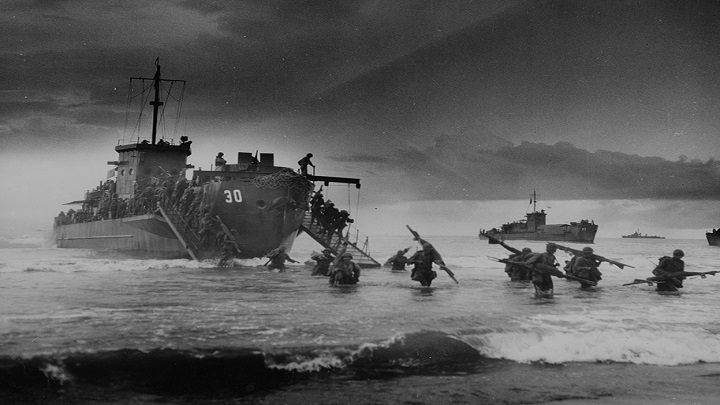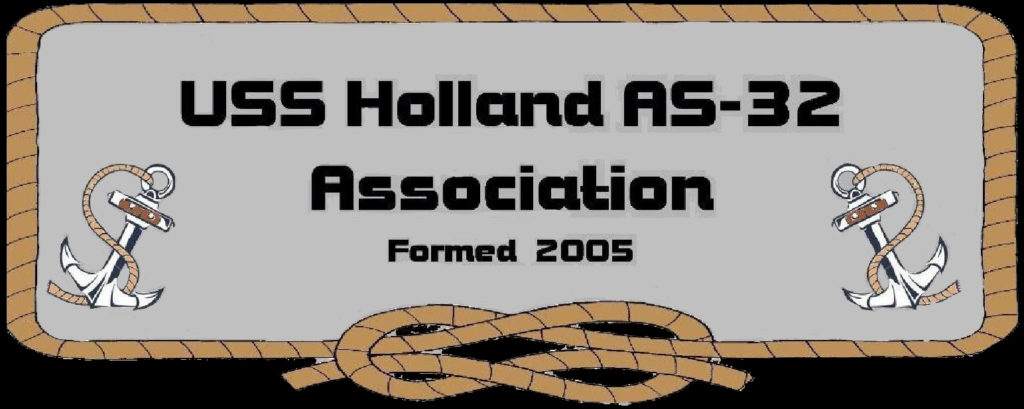By Jason Schreck
This is the first in a series exploring the World War II service of my paternal grandfather Thomas D. Schreck. I embarked upon this project two years ago in an effort to learn more about his service. My grandfather did not share much with his family about his time in the military, but fourteen years earlier I had an opportunity to spend a great deal of time with him wherein we talked about many topics including his military service. Many of the stories and information he shared with me he had never shared with his children. When he passed away in 2013, I inherited the journal he kept during World War II as well as his military ribbons, medals, and two photo albums from his naval service. This led me to want to learn more.
What I found opened my eyes to a career that spanned two wars and three branches of service over 24 years. Some of the stories he told me I was able to confirm, while others I found to be partially true or true to the extent that they did happen but he was not directly involved in the events. I also discovered a secret marriage. This series will explore his first four years of service through a combination of his journal, the ship’s war journal, and personal stories as well as other records. Through this I hope to share his story along with his personal history as a sailor as part of the historical record of World War II. With the passing of more and more veterans of that era so many stories are being lost. I hope this will help to ensure his story will live on and help others studying these events.
Thomas Schreck was born in Milwaukee, Wisconsin on 3 October 1923. He enlisted in the U.S. Navy on 6 February 1943 and was sent to Camp Porter Great Lakes. He graduated recruit training on 3 April 1943 and remained at Camp Porter until 21 April 1943 when he was transferred to Norfolk, Virginia as a Torpedoman 3rd class. His journal indicated he may have been rated or trained at different times as boatswain’s mate and gunner’s mate. However, there is no indication why he did not retain these rates, but when he left Norfolk on 21 April 1944 he was listed as a Seaman 2nd Class with no rate listed. From Norfolk he traveled to North Africa where he joined his ship.

Thomas Schreck’s Boot Camp Graduation
(Courtesy of the Author)
Below is the first of a series from his journal entries. These entries are copied directly from his journal as written with contemporary language and expressions. This includes misspellings as well as wording that may not be considered appropriate today. The journal begins in April 1944. He notes that did not write sooner because “This is the first time anything of real importance has happened to me in the Navy. This is why I started so late.”
“Friday April 21, 1944
Went aboard the Army transport
U.S. Johnson at 1700. Had a darn
hard time getting my gear down
in the hold. The bunks were in
layers of six and of course I had to
get a top one. We left the dock
at 6:25 and went out in the
bay to anchor for the nite. By
the time taps blew, we were
all asleep from loading the
ship I guess.”

SS Reverdy Johnson (The Mariners Museum Collection)
The U.S. Johnson mentioned in this first entry is the S.S. Reverdy Johnson, a liberty ship that was assigned to Convoy UGS-40. The Reverdy Johnson carried 498 troops bound for the port of Oran Algeria. As evidenced by my grandfather’s descriptions of his accommodations things were a bit tight.

Typical Accommodations on a Liberty Ship (Courtesy of the Author)
This would be his home for the next 20 days.
“Saturday April 22, 1944
Woke up at 06:30 and went
topside to see what was what.
I counted over 80 ships in the convoy
and that was all I could see but
I know there was more on the
horizon. Gave us our instructions for
G.Q., fire drill and
abandon ships. Never
knew that a person has so much
business and could be kept so
darn busy doing nothing. The chow
line isn’t very bad. Only have to
wait 45 minutes for it. And what
lovely food. They feed Arabs better
dog meat. Got to my sack at 1800.”
The UGS-40 Convoy had 101 ships in total including merchant and military vessels. Liberty ships like the Reverdy Johnson were lightly armed so GQ (General Quarter’s) Drills were necessary in case the convoy came under fire. The ship’s mess halls were typically small and had to accommodate a large number of crew.

The mess of the SS Jeremiah O’Brien a Liberty Ship (Courtesy of the Author)
“Sunday April 23, 1944
Got underway at 03.00 this morn.
All felt pretty happy about it. Went
to church, for a change, and felt
%100 better afterwards. Stood up in
the bow and watched the other
ships. Some had P38’s P47’s and
P51’s on their decks. They carry
anything from soup to peanuts. Had
G.Q. this noon. Got the ship slow
ed down because of a sub warning.
Hit the sack at 21:00.”

Aerial view of a convoy during WWII, 3 May 1944 (U.S. Naval Institute Photo Archives)
With the convoy system in place submarine attacks were becoming rarer, however, German U-boats were still paroling the Atlantic and a liberty ship with minimal armaments was considered an easy target. The convoy also included destroyers and destroyer escorts who were better armed to take on submarines. U-boat scares continued throughout the journey to north Africa.
The convoy did not arrive in Oran until 11 May. During that time my grandfather settled into life on board ship. He experienced fear, excitement, and sometimes endless boredom. As he was not a member of the ship’s crew he had little to do and only occasional duty. It took more than a month to reach his ship the USS Sway (AM-120). Much of this series will document his journey to the Sway as well as his voyages thereafter.
Look for this series to continue in the months to come.


